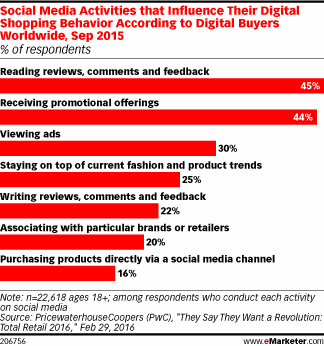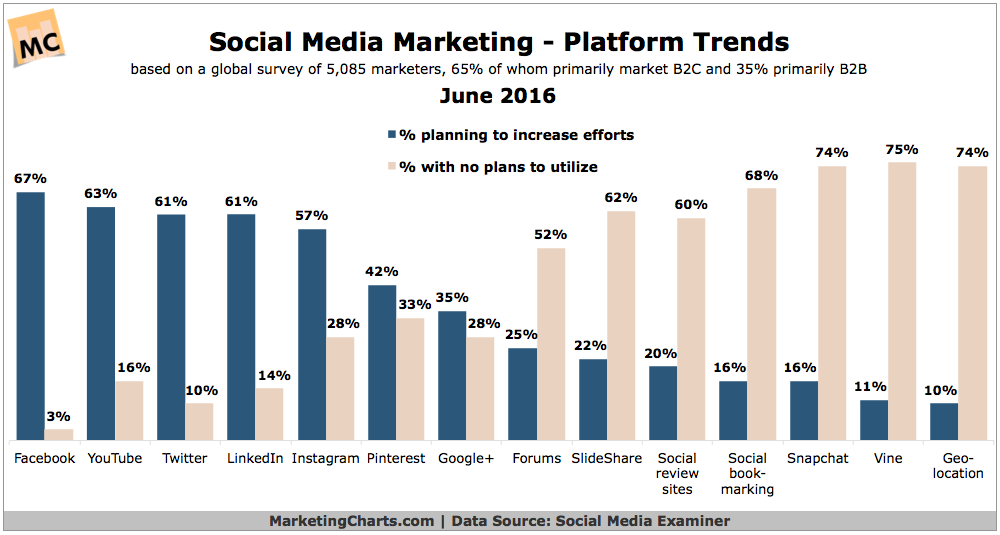Each week, we publish a mishmash of ecommerce related, insight infused articles for your to smash through. Just as we collect business information across all of a merchant’s channels in a single place, we’re doing the same for ecommerce related content from a variety of top tier content creators.
Last week, our mishmash was all about how product photography and copy can act as an in-store experience, informing consumers about the product without them experiencing it in real life. This week, it’s all about another way to convince your customer to swipe their credit card: social media. We’ll cover emerging trends in the space, social media’s usefulness as social proof, its rising ROI reputation, and some tools to optimize your own campaigns.
Really Optimistic Info
Over the past two years, merchant outlook towards social media’s ROI has gotten much more positive. According to research by Salesforce, 75% of them are watching their social investment pay off, with 39% claiming it generates “significant ROI” and 36% saying “somewhat.” Part of the more optimistic outlook is rooted in e-retailers’ move from a single social media strategy that exists by itself, to a social strategy that’s completely cross-channel. Consumer behavior is omnichannel these days, and a social strat that’s shared across each channel — whether it’s social or email — promises to be far more effective than one that’s stagnant and restricted to social platforms alone.
Peer Pressure
Consumers can’t get an in-person look of your product in action if you sell online. They can’t tinker with it themselves before buying. Instead, they rely on none other than social proof, oftentimes via social media. PricewaterhouseCooper polled more than 20,000 consumers, hoping to pick out insights into how social media influences their purchasing behavior, and the data revealed pretty much what you’d expect. To get firsthand knowledge on a product, they refer to others’ experiences, opinions, and feedback, making social media an important factor in the customer’s purchase process that can potentially make or break a sale. Add “buy” button into your media mix, and you’re making it that much easier.
Tools Are Always Cool
Industry research is great and all, but the day-to-day grind of a social media strategy needs more than abstract insights — it needs tools to help get the job done in the first place. Take a look at this post by Shopify for more than ten tools out there to assist with your campaigns. There’s a ton of variety out there, with tools ranging from platform-specific ones like Buyable Pins, to large, scheduling ones like Zapier. Whatever your specific needs, there’s more than likely a tool for you when it comes to social media.
Snapchat’s Success
A relatively new, often dismissed platform is Snapchat, but, in terms of an active userbase, its becoming a key player in the social media scene. Recently, Snapchat surpassed Twitter in user amount, currently resting somewhere around 150 million daily users compared to the latter’s 136 million. But it doesn’t end there either — it’s expected to beat out all other platforms in terms of growth, which eMarketer predicts to be 27% this year. What’s the driving force behind it? An ever-growing amount of young users, a readily-available mobile focus, and rising consumer demand for a more 1:1, controllable, and less broadcasted social media platform.
Spending Time on Trending Channels
But it’s one thing to read about a relatively new platform taking off, and another to put some money and time into it. Which platforms are e-retailers actually focusing on? Here’s a look based off of 5,000+ marketers by Social Media Examiner. Snapchat may be getting some good press, but respondents certainly aren’t interested in it. Long-established platforms — Facebook, YouTube, and Twitter — have the most capabilities and largest audiences, so it’s natural they receive significant attention. Interestingly, Instagram definitely seems on-the-rise.





